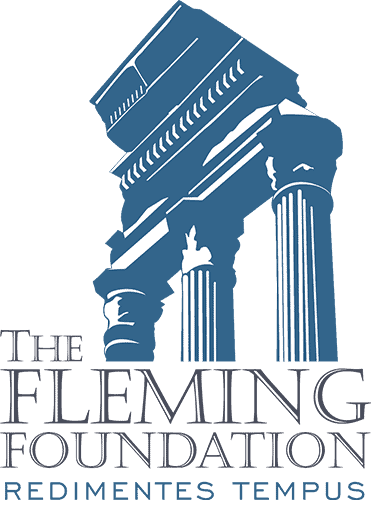Sicilian Trog, Part II
This is the long-awaited Part II of my Agrigento Trog
There is hardly a better place in Europe—not even Athens—were the differences between the ancient and the modern world can be felt so acutely. 20th century Agrigento is, at its best, a tribute to the greed and and contempt for humanity that have characterized modern governments that are the distilled essence of democratic man. The local government is hopelessly inept at carrying out the most basic tasks—picking up trash, policing traffic, cracking down on organized crime. And yet, good democratic socialists that they are, they have imposed new rules on sorting trash that are so complicated and demanding that trash collectors always have a good reason not to pick up your refuse. The result is streets and highways lined with plastic bags bursting with garbage, single lane streets with two lanes of traffic, parking on both sides, motorcyclists and motorbikes who defy every traffic law in the books and imperil the lives of pedestrians and motorists alike, and as for organized crime, the less said the better. It it is a lot like New Jersey or Rockford.
Earthquakes have done a good job of destroying Medieval and Renaissance Sicily, but enough is left oft `old Girgenti to give the little city its charm, and the Norman church in the convent of Santo Spirito—reached by steep steps and circuitous pathways—is filled with marvelous baroque plasters by the great Serpotta, as fine as any of his work in Palermo.
Down here in the “Valle dei Templi,” we breathe the fine air of antiquity. Pindar called Akragas the “fairest city of mortal man,” and even in ruins the city is grand enough to prove that he must have been exaggerating only slightly if at all. The great classical scholar Gunther Zuntz said of the man who designed the town, “He was a genius—the town-planner from Gela who, in the second decade of the 6th century, selected, from among the countless hills lining the southern coast of Sicily, the site for the city of Akragas. Standing where, two thousand years later, the Duomo was to overlook the shrunken town, he conceived by an inspiration equal to any artist’s or poet’s, the design of a grandiose city on the vast terrain at his feet.”
Acragas was founded by Gela, a which was itself a colony established by settlers from Rhodes, Crete, and the tiny island of Telos. To Acragas there came both Geloans and many settlers directly from Rhodes. One of the Rhodians, Telemachus, arrived with a contingent of settlers. He was the ancestor of Theron, the greatest ruler of city.
Acragas, as said, was established about 580—a century before the wars between Greeks in the East and the Persian Empire and Greeks in the West (Italy and Sicily) and Carthage. The first Greek settlements in the West (Sicily and Magna Graecia) had been planted in the 9th and 8th centuries by Ionian Greeks from Chalcis (in Euboea, long island NW of Athens). The Chalcidians settled Naxos on the East coast, from which the more important towns of Catana and Leontini were planted, Himera, and (with help from Messenians of the Peloponnesus) Messana and (with people from Megara) the town of Megara Hyblaea, whose residents later settled Selinus (to the west of Acragas, modern Agrigento). Dorians from Corinth established Syracuse, and Dorians from m Crete and Rhodes settled Gela, which later established Acragas.
Unfortunately, Gelon the great lord of Gela took over Syracuse, depopulated his native city, and settled and resettled cities like so many Levittowns. One of the results was the impoverishment of Gela, which, despite a magnificent location, is probably the ugliest city in Sicily. We wasted the better part of a day driving there to see its wretched museum, whose saddest boasts are the Geloan antiquities now housed in Palermo, Paris, and Germany.
What a relief to get back to peaceful and orderly Agrigento!
Speaking generally, modern civilization—say Europe and North America since the Renaissance—requires from its citizens bourgeois habits, disciplines, and character almost Spartan in their demands. What happens when Third World peoples are injected into London and Chicago, needs no retelling, but Medieval peasantries—as charming and creative as their cultures often are—have yet to adapt to conditions of modernity, and, to the extent they do, they give up a rich and colorful existence in exchange for the Centro Commercio of Agrigento, with its supermarket and department stores selling all the junk they see advertised on American TV.
As Americans are losing—and at so rapid a pace—their bourgeois foundations—our doom should be apparent to all observers: a dwindling number of decent and self-controlled people retreating into their own communities as the rest of the country slips into a land of rappers and Kardashians that makes even Gela--New Jersey's outpost in Sicily-- seem like paradise.




A better place to go in Europe is Portugal – but not in the summer months. You can get a personal tour from the Algarve in the south to Oporto in the north to learn about the little country that became the first global empire. For a country with only around 10 million people, it left a legacy of around 250 million people who speak Portuguese as their main language. It is the most visited country in Europe. It has fine wine and cuisine. They make the best fish stew in all the world 🙂